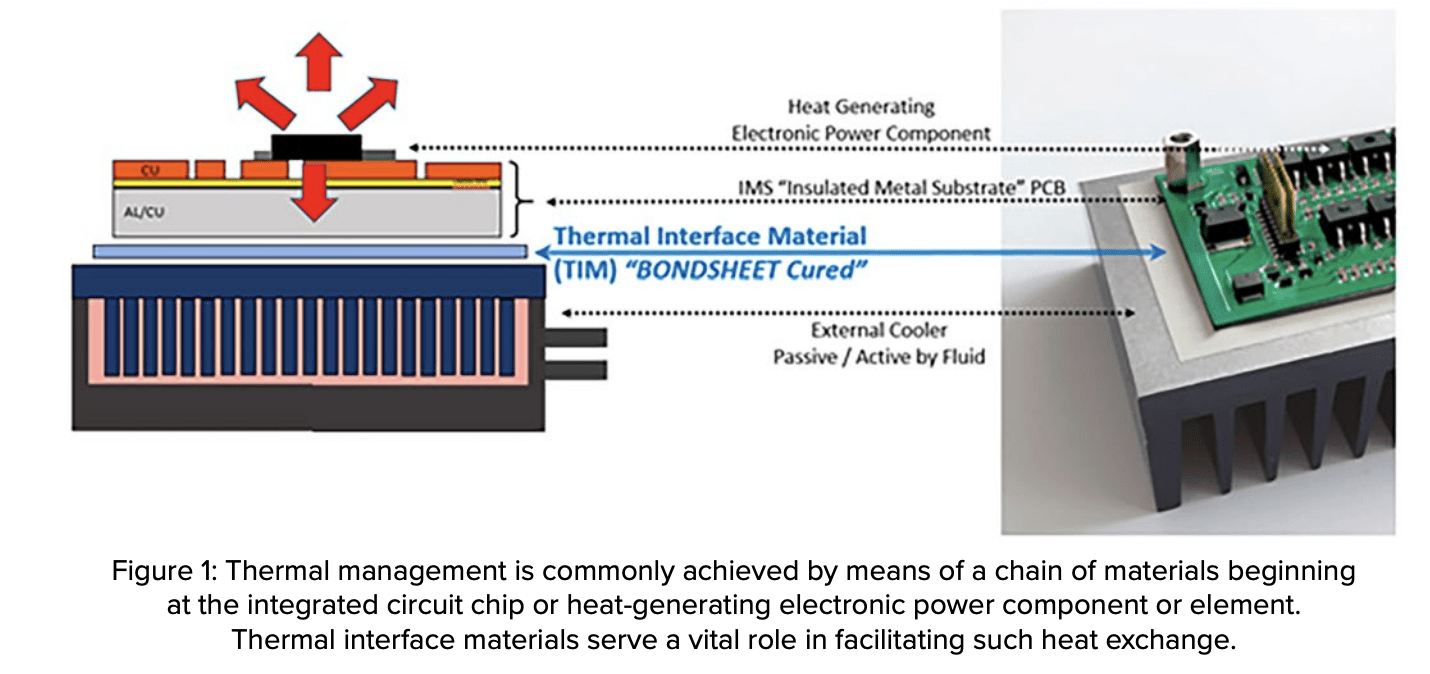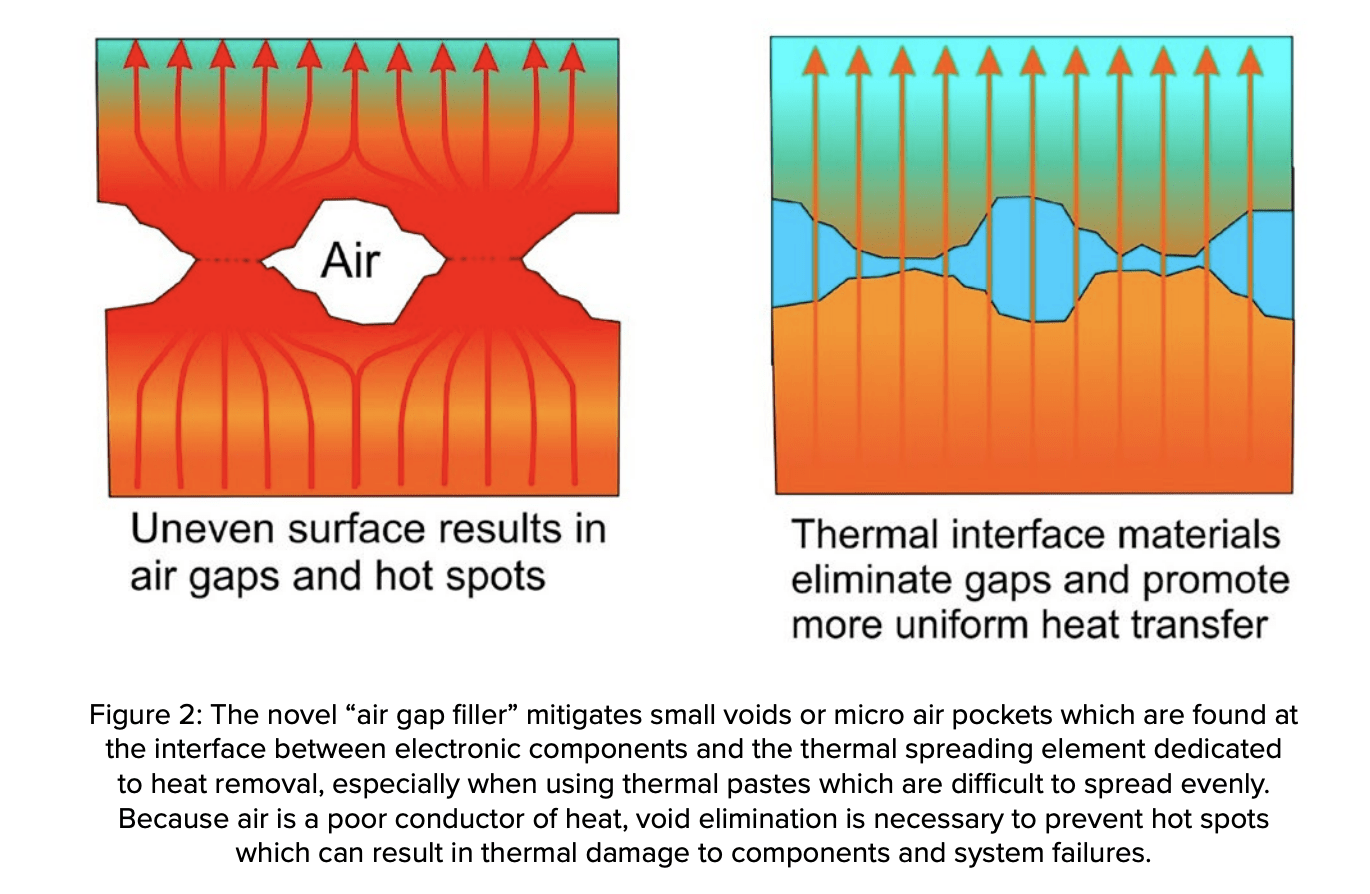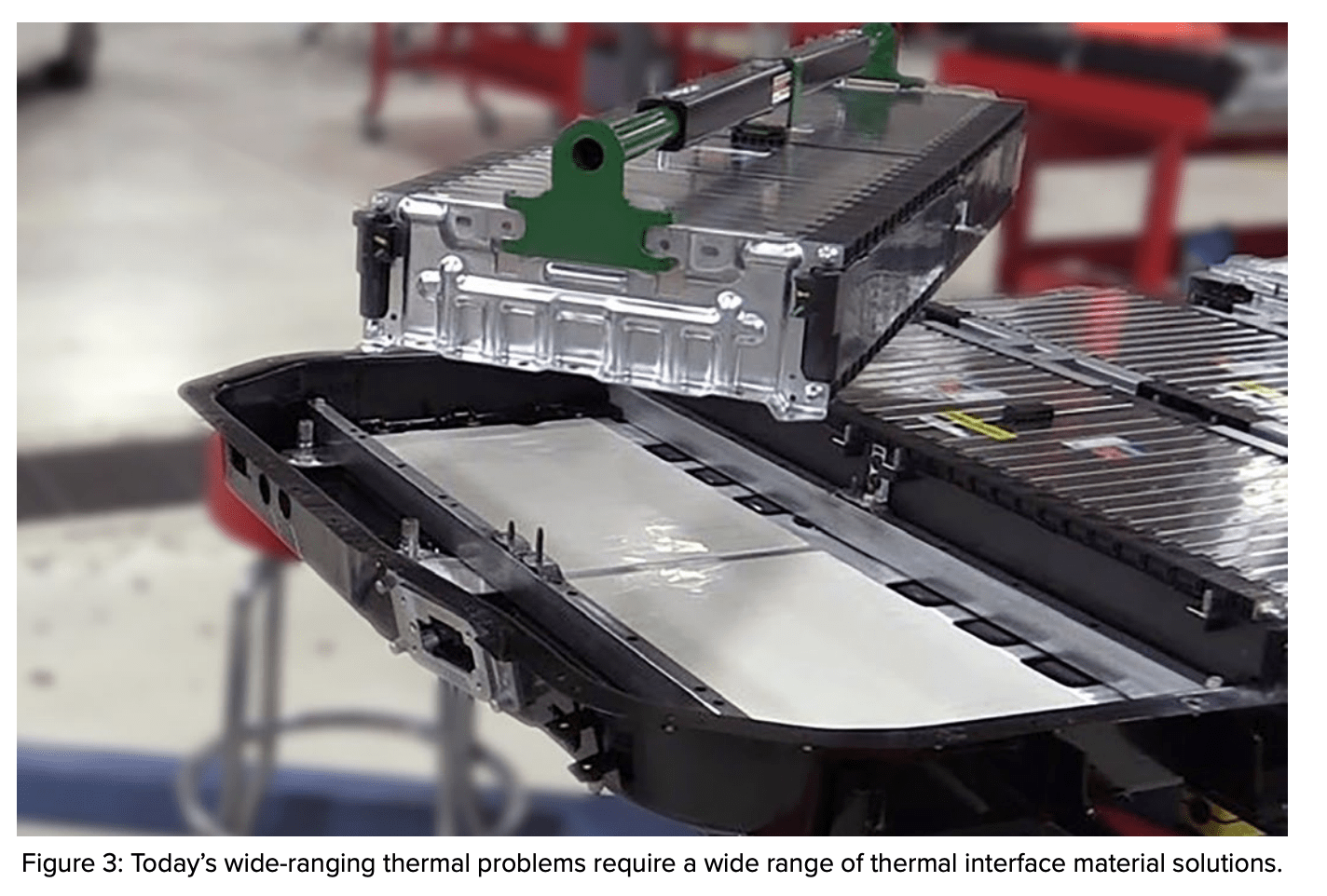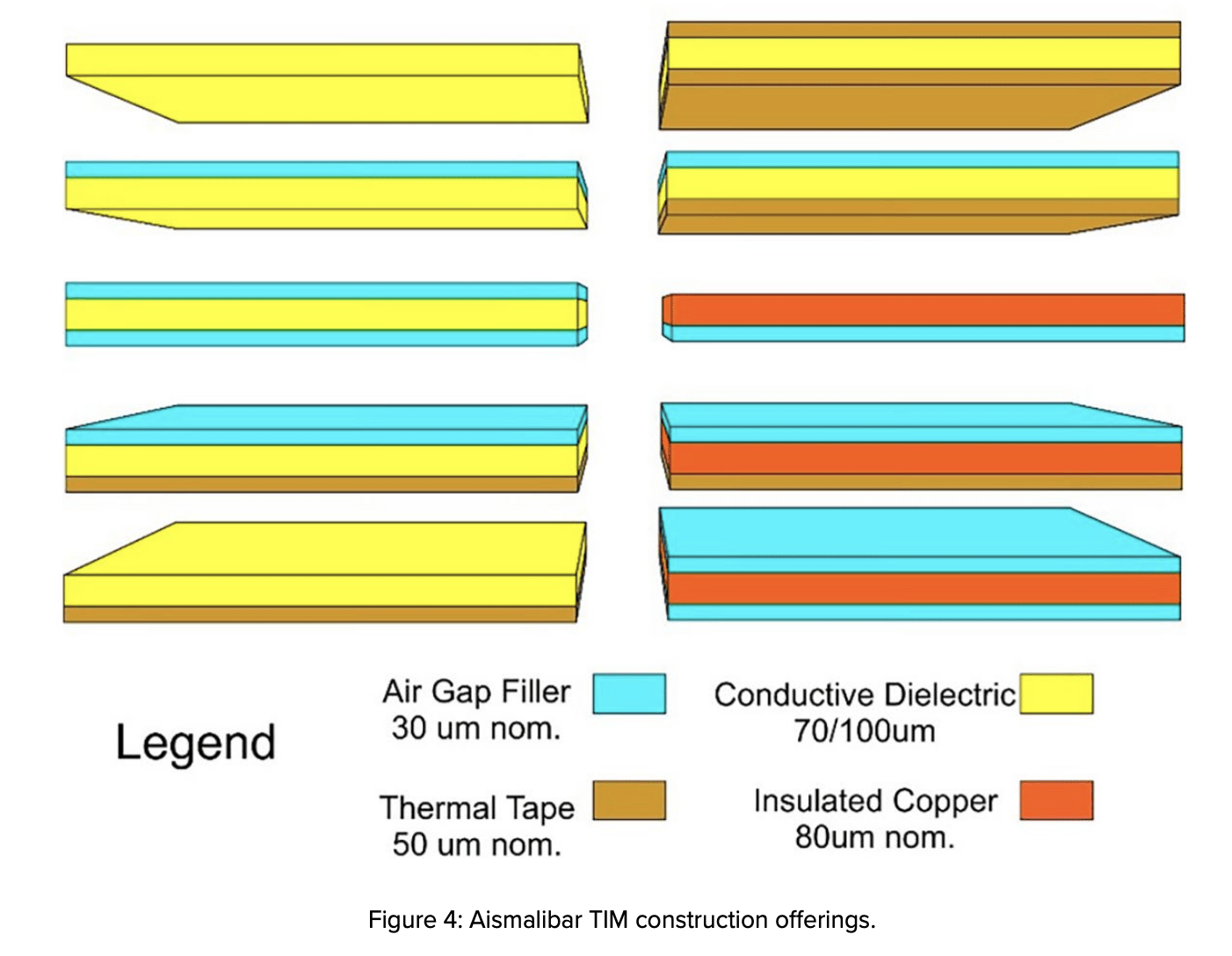Heat has been a significant concern in electronics since the beginning of the electronics age when hot glowing vacuum tubes were first used to receive and transmit data bits. The transistor and integrated circuit effectively solved that basic problem, but increases in integration resulted in increased concentration of heat, exacerbated by relentless increases in operating frequency. While improvements in electronics technology have been able to mitigate many thermal issues at chip level thanks to improved semiconductor designs devised to operate at lower voltages (thus requiring less energy) the thermal management challenge continues to vex electronic product developers.
Moreover, with ever denser heterogeneous integration solutions now being introduced, this is expected to remain a concern to Improved Thermal Interface Materials for Cooling High-Power Electronics be addressed for the foreseeable future. Thermal engineers have long known that thermal energy must ultimately be “returned to the air” but getting it there in an efficient way is of great importance. They know also that there are but three basic ways of removing heat from a system: conduction, convection, and radiation; of these, conduction is by far the most efficient. In the manufacture of printed circuits, especially those used in high power applications, the board itself becomes an obvious potential means of helping to remove heat. However, the choice must be made carefully to assure that it fits well into the scheme of traditional manufacturing, as the materials required must not only remove heat but must also maintain the high electrical insulation properties that are vitally important to printed circuit designers and the products they develop.
This has been a primary focus of Aismalibar for some time and the company has accordingly developed a family of new thermal interface material (TIM) technologies designed specifically for printed circuits. The unique materials the company has developed have thermal conductivities up to 3.2 W/mK (tested according to ASTM D5470) and high electrical insulation properties of up to 6 KV AC. (For comparison, nominal laminate materials have thermal conductivities of 0.25 W/mK.) Concept Model for Thermal Management Chain in Power Electronics Thermal interface materials are used by design in power electronics modules to facilitate the transfer and dissipation of the heat generated by the active and passive power components on the printed circuit board by enabling efficient transfer of heat through a cooling chain to a downstream cooling element, such as a heat spreader or heat pipe and cooling fan. The ultimate objective is to ensure that the maximum component temperature specified by the manufacturer is not reached.
In addition to providing high thermal conductivity, the TIM must also provide adequate electrical insulation properties; this is especially and increasingly important in high-voltage environments such as those experienced in modern electric vehicles. The better balanced the compromise between thermal conductivity and electrical insulation capability of the TIM, the higher the performance and reliability of the entire power electronics module over its service life (Figure 1). Thermal Interface Material Solutions A key recent development, underpinning Aismalibar’s new TIM concepts, is a new coating technology referred to by the company as its “air gap filler,” which in addition to its excellent thermal and electrical insulation properties, the need to employ an often complex and messy TIM thermal paste application. A key objective of the air gap filler product is to eliminate voids which otherwise can result in “hot spots” at the interface as illustrated in Figure 2. The novel air gap filler material solution being offered is non-adhesive at room temperature for ease of handling and advantageously begins to polymerize at low temperature (~40°C). The material is tack free and thus requires no peelable liner, avoiding waste and streamlining the product’s use.


The air gap filler has no woven glass reinforcement allowing it to more effectively fill completely the space between mating surfaces and it bonds effectively and securely with only slight mechanical contact pressure, adding to its ease of use. The low temperature bond creates a solid, long-lasting thermomechanical connection between constituent elements of the cooling chain for the power module during the assembly process. In addition, Aismalibar has developed other cost effective, self-adhering TIM variations comprised of the novel adhesive in combination with highly conductive copper foils coated with a thin electrically isolating layer (Isolcopper). These inexpensive self-adhesive, thermally conductive foils are available as cost-effective coating options in the new TIM family of solutions which help simplify the thermal management. The current roster of thermal solutions is based on reinforced dielectric polymerized interface material designed for high dielectric isolation and low thermal resistance both in normal and a high Tg (180°C with reduced CTE) formulations. The products are fundamentally a thin dielectric layer, high dielectric strength, high thermal conductivity, and low thermal resistance comprised of a glass fabric base, enriched with mineral fillers.
The product has a thermal conductivity of 2.2 W/ mK with dielectric strengths greater than 4 KV (70 mm dielectric) or 6 KV (100 mm dielectric thickness) and a low thermal resistance Rth of 0.315 (70 mm), or 0.45 Kcm2 /W (100 mm), to efficiently dissipate the heat generated by the power components to the cooling elements. Importantly for many applications, the product is silicone free and can be easily adapted to pick and place automation. Again, a very important solution in the Aismalibar stable of products is Isolcopper—a thin copper (35-80 micron) clad with an ultrathin dielectric layer filled with high end mineral content. The product combines the benefits of the excellent thermal conductivity of copper with a specially developed dielectric coating to provide the benefits of copper conductivity with electrical isolation when and where it is desired or beneficial. All materials can be procured with the air gap filler applied to one or both sides, which is very important for the elimination of air gaps and voids. The company offers a thermal tape, up to 100 mm thickness, which provides versatility and ease of use in special applications or for repairs or modifications.

All products are UL V0 rated and all products can be easily cut or punched to a desired shape and size. Solution Selection Considerations Given the relentless trend in electronics toward ever-higher power in an ever-wider array of electronic products, from power modules in PV inverters and wind power controls, to electronic-governed mechanical transmissions, AC/DC converters, and high-power LED-based industrial lighting systems, each application may require a different solution to assure that the heat generated by the electronics is dissipated as quickly, effectively, and cost-efficiently as possible. A well-balanced thermal management concept will promote and enable a longer service life for the electronic components and thus higher performance and quality of the electronic end-product. Key factors when selecting the most suitable TIM for a particular application are most fundamentally the thermal conductivity or thermal resistance, the electrical insulation properties of the material used, while taking into account the different material expansion coefficients to assure that thermal conductivity is maintained, in the X-Y plane and vertically in the Z-axis, when in use to control and mitigate thermally induced forces which might cause undesirable mechanical stresses. Figure 3 provides cross-sectional representations of the structures of Aismalibar’s family of TIM products.

Summary
Electronics have continued to find their way into the products we use in our daily lives and it is unlikely this will abate any time in the foreseeable future. Management of the heat generated by those products to preempt early heatrelated failure will likely grow in importance. Today, many users around the world rely on this proven TIM technology for power modules in PV inverters, wind power controls, electronic gears, AC/DC converters, and highpower LED-based industrial lighting systems. Many applications can also be currently found in electric vehicles (EV) for including areas of the drive train, charging devices used in the vehicle (on-board charger), and for the rapidly growing external rapid-charging infrastructure. The solutions described in this article are proven, available, and ready to address the important thermal challenges including those where high dielectric strength is desirable. Aismalibar products are well suited to meet the growing need for such thermal management solutions to help mitigate and/or eliminate thermal challenges facing the electronics industry as power densities continue to climb.
